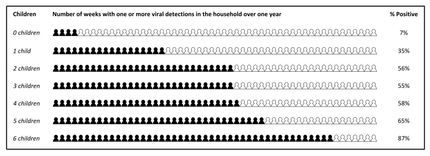Our brains are more like birds' than we thought
UC San Diego researchers find structural similarities in the neocortices of humans and chickens
For more than a century, neuroscientists believed that the brains of humans and other mammals differed from the brains of other animals, such as birds (and so were presumably better). This belief was based, in part, upon the readily evident physical structure of the neocortex, the region of the brain responsible for complex cognitive behaviors.
A new study, however, by researchers at the University of California, San Diego School of Medicine finds that a comparable region in the brains of chickens concerned with analyzing auditory inputs is constructed similarly to that of mammals.
"And so ends, perhaps, this claim of mammalian uniqueness," said Harvey J. Karten, MD, professor in the Department of Neurosciences at UCSD's School of Medicine, and lead author of the study, published in the Proceedings of the National Academy of Sciences.
Generally speaking, the brains of mammals have long been presumed to be more highly evolved and developed than the brains of other animals, in part based upon the distinctive structure of the mammalian forebrain and neocortex – a part of the brain's outer layer where complex cognitive functions are centered.
Specifically, the mammalian neocortex features layers of cells (lamination) connected by radially arrayed columns of other cells, forming functional modules characterized by neuronal types and specific connections. Early studies of homologous regions in nonmammalian brains had found no similar arrangement, leading to the presumption that neocortical cells and circuits in mammals were singular in nature.
For 40 years, Karten and colleagues have worked to upend this thinking. In the latest research, they used modern, sophisticated imaging technologies, including a highly sensitive tracer, to map a region of the chicken brain (part of the telencephalon) that is similar to the mammalian auditory cortex. Both regions handle listening duties. They discovered that the avian cortical region was also composed of laminated layers of cells linked by narrow, radial columns of different types of cells with extensive interconnections that form microcircuits that are virtually identical to those found in the mammalian cortex.
The findings indicate that laminar and columnar properties of the neocortex are not unique to mammals, and may in fact have evolved from cells and circuits in much more ancient vertebrates.
"The belief that cortical microcircuitry was a unique property of mammalian brains was largely based on the lack of apparent lamination in other species, and the widespread notion that non-mammalian vertebrates were not capable of performing complex cognitive and analytic processing of sensory information like that associated with the neocortex of mammals," said Karten.
"Animals like birds were viewed as lovely automata capable only of stereotyped activity."
But this kind of thinking presented a serious problem for neurobiologists trying to figure out the evolutionary origins of the mammalian cortex, he said. Namely, where did all of that complex circuitry come from and when did it first evolve?
Karten's research supplies the beginnings of an answer: From an ancestor common to both mammals and birds that dates back at least 300 million years.
Most read news
Other news from the department science

Get the life science industry in your inbox
By submitting this form you agree that LUMITOS AG will send you the newsletter(s) selected above by email. Your data will not be passed on to third parties. Your data will be stored and processed in accordance with our data protection regulations. LUMITOS may contact you by email for the purpose of advertising or market and opinion surveys. You can revoke your consent at any time without giving reasons to LUMITOS AG, Ernst-Augustin-Str. 2, 12489 Berlin, Germany or by e-mail at revoke@lumitos.com with effect for the future. In addition, each email contains a link to unsubscribe from the corresponding newsletter.
More news from our other portals
Last viewed contents



















































